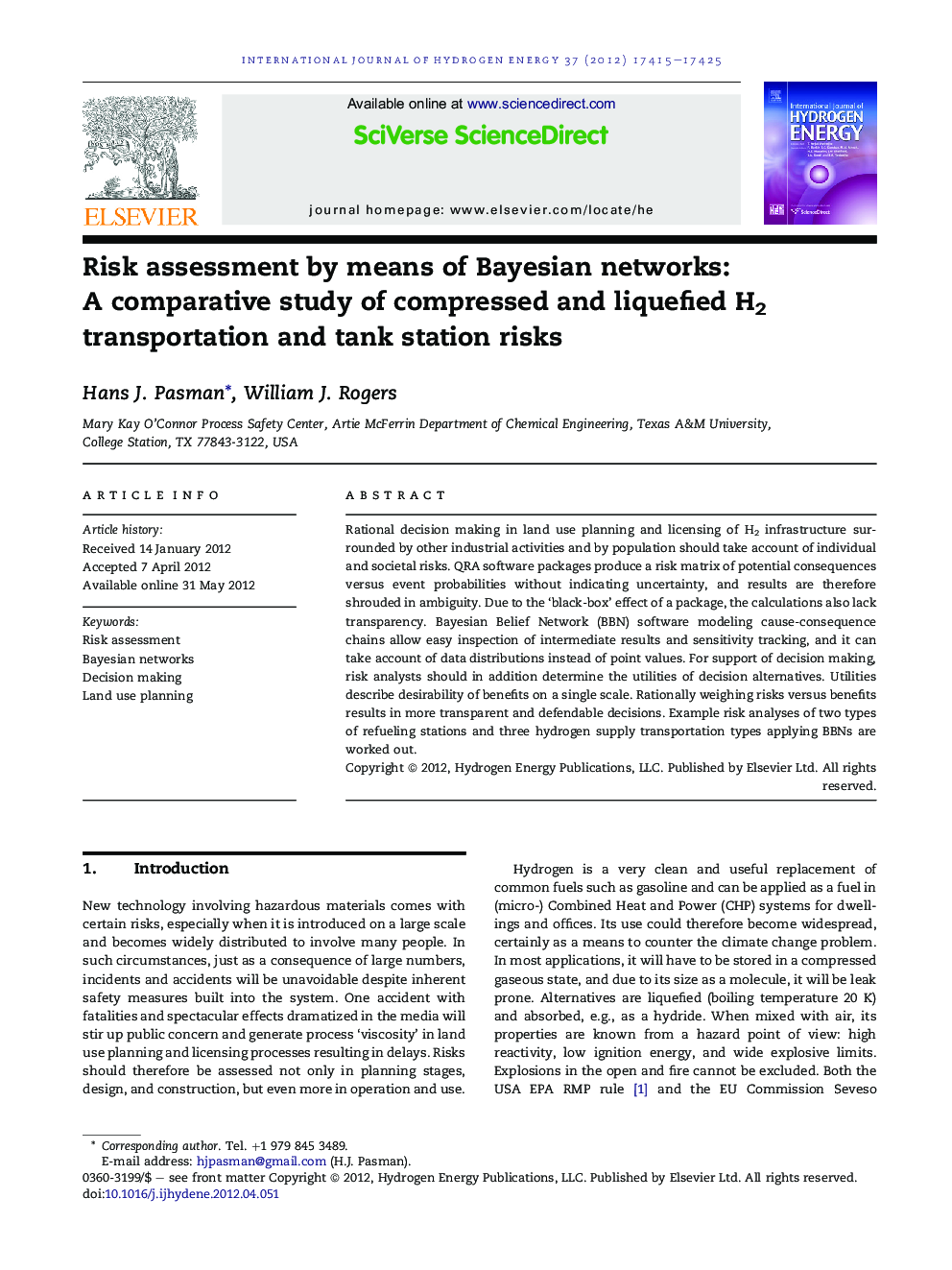| کد مقاله | کد نشریه | سال انتشار | مقاله انگلیسی | نسخه تمام متن |
|---|---|---|---|---|
| 1270928 | 1497547 | 2012 | 11 صفحه PDF | دانلود رایگان |

Rational decision making in land use planning and licensing of H2 infrastructure surrounded by other industrial activities and by population should take account of individual and societal risks. QRA software packages produce a risk matrix of potential consequences versus event probabilities without indicating uncertainty, and results are therefore shrouded in ambiguity. Due to the ‘black-box’ effect of a package, the calculations also lack transparency. Bayesian Belief Network (BBN) software modeling cause-consequence chains allow easy inspection of intermediate results and sensitivity tracking, and it can take account of data distributions instead of point values. For support of decision making, risk analysts should in addition determine the utilities of decision alternatives. Utilities describe desirability of benefits on a single scale. Rationally weighing risks versus benefits results in more transparent and defendable decisions. Example risk analyses of two types of refueling stations and three hydrogen supply transportation types applying BBNs are worked out.
► Bayesian networks present a relatively new way to model cause-consequence chains.
► Advantages are better transparency, and flexibility than existing QRA software offers.
► Influence Diagram mode provides cost-benefit comparison to support decision making.
► Risk versus cost of various hydrogen distribution modes are compared.
► It will pay to investigate hazard aspects of large spills of liquefied hydrogen, LH2.
Journal: International Journal of Hydrogen Energy - Volume 37, Issue 22, November 2012, Pages 17415–17425